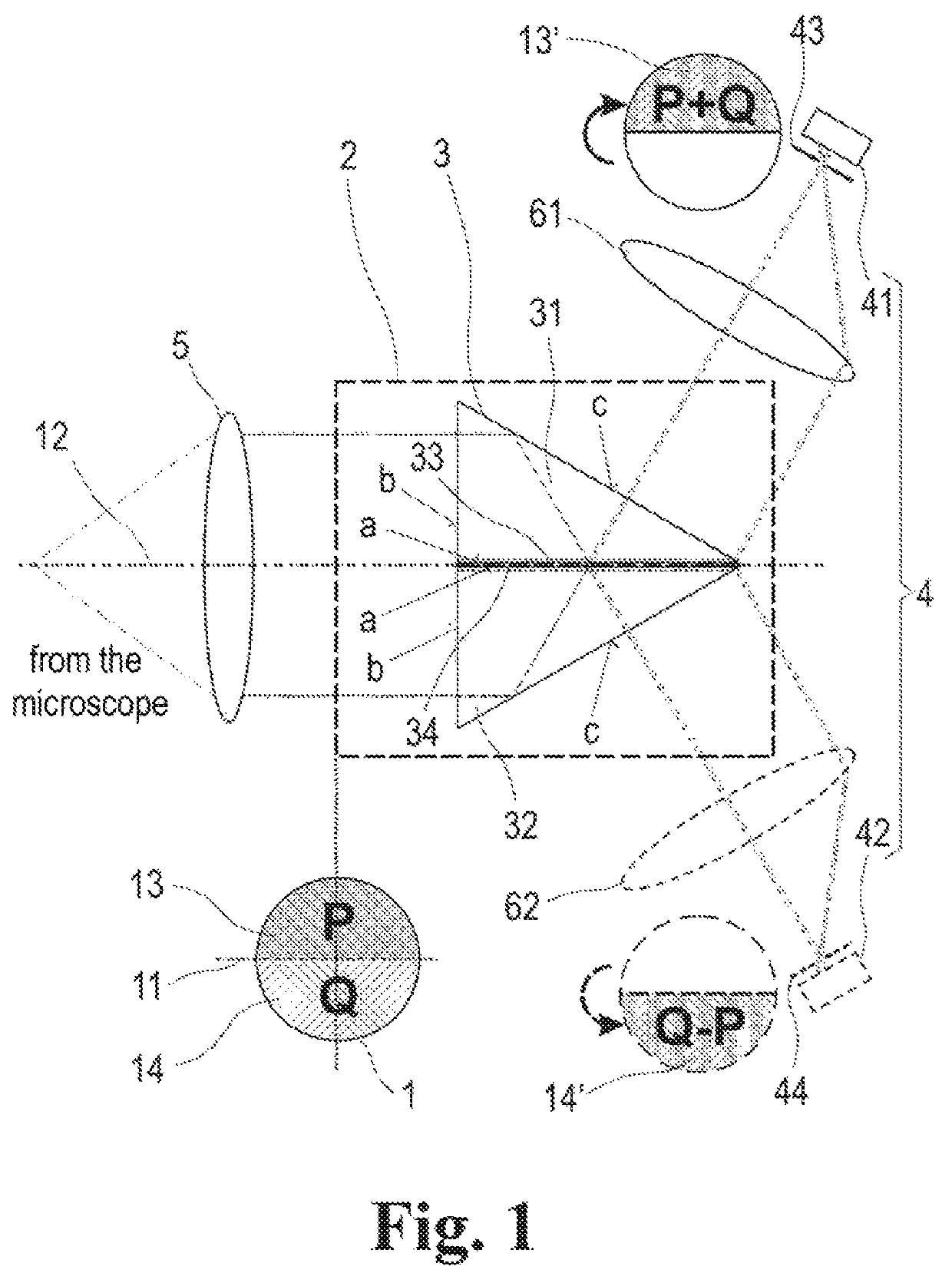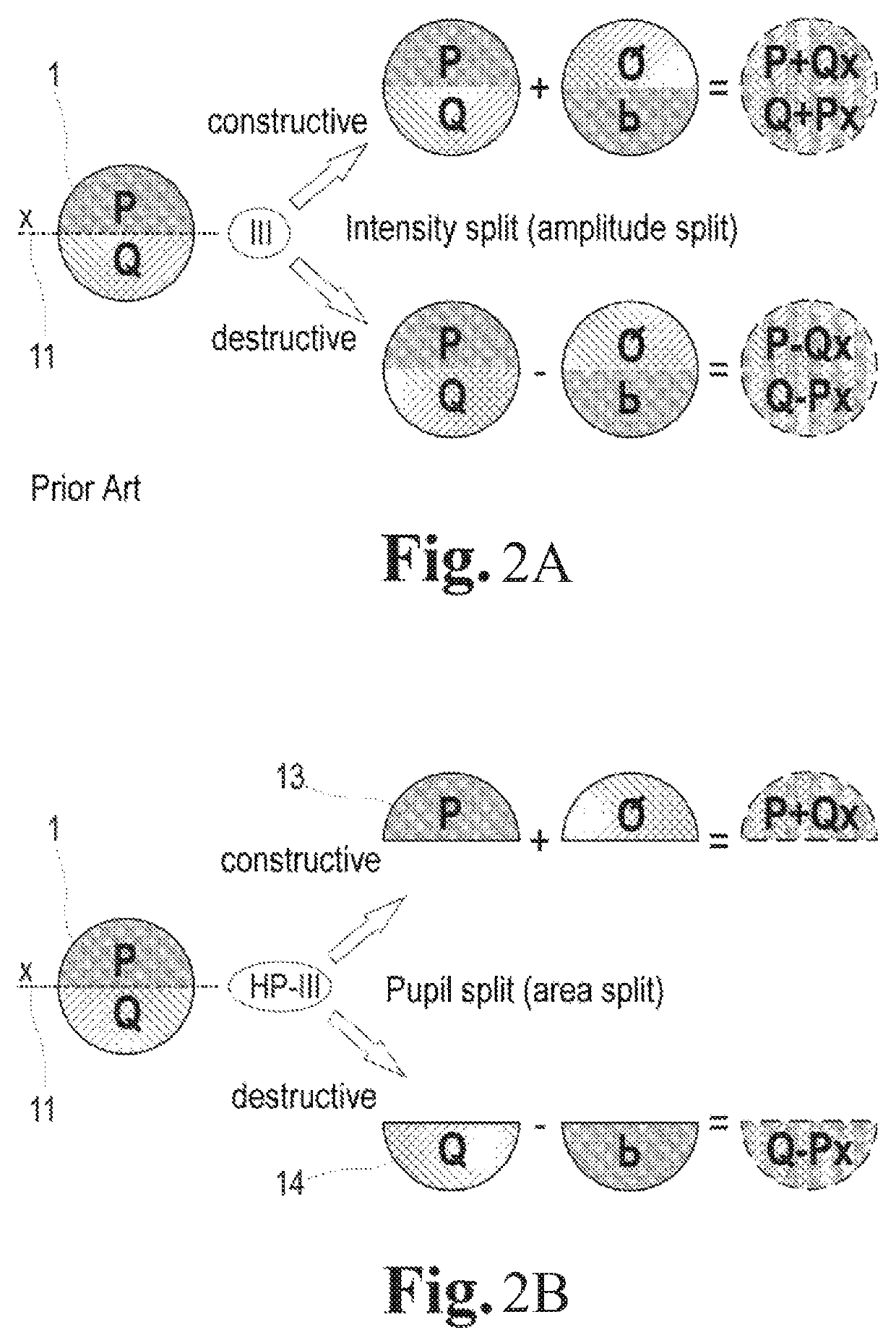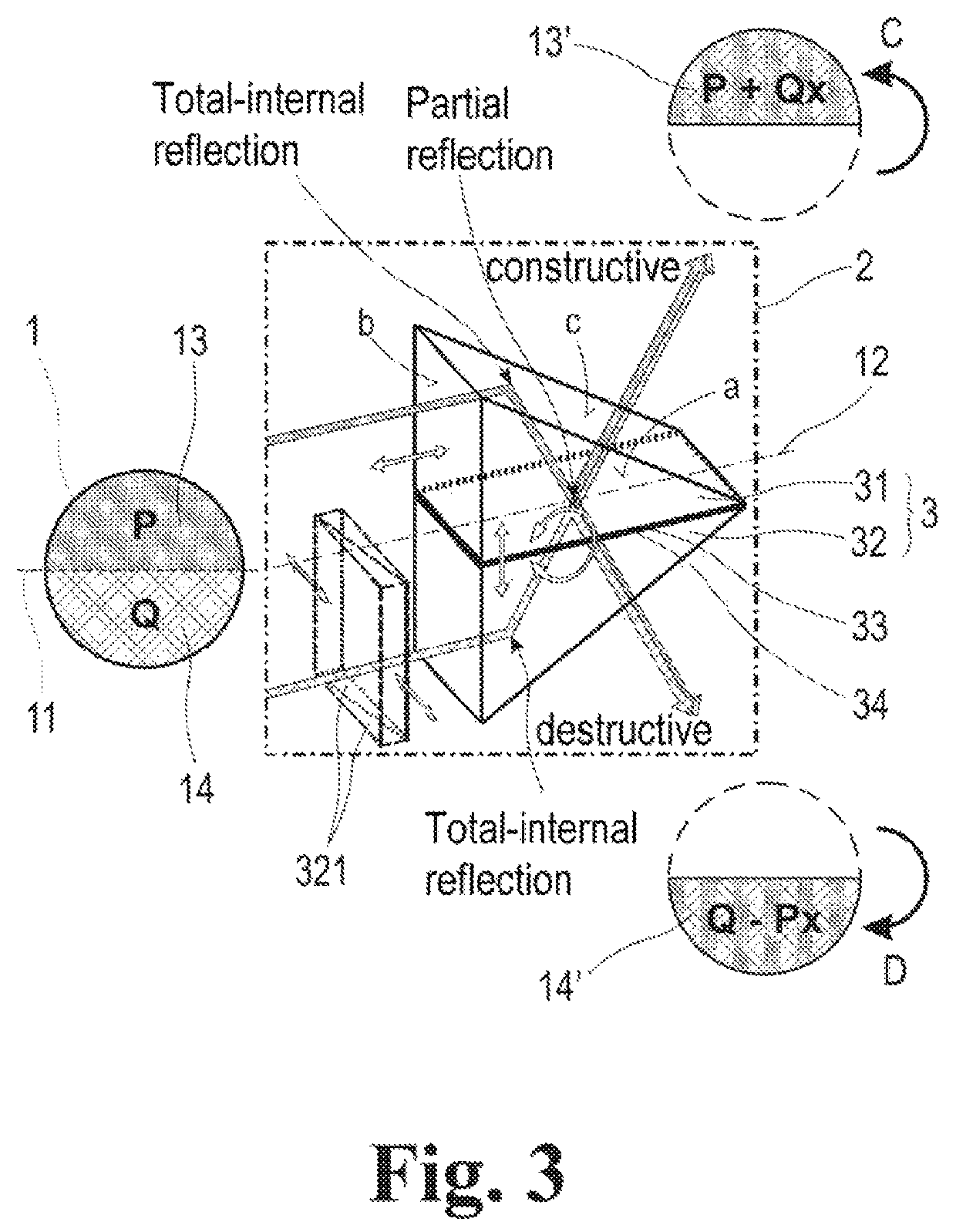Assembly for Increasing the Resolution of a Laser Scanning Microscope
a laser scanning microscope and resolution technology, applied in the field of assembly for increasing the resolution of laser scanning microscopes, can solve the problems of difficult use of the above-described iii methods in the microscope, complicated methods, etc., and achieve the effects of low production cost, convenient adjustment, and easy operation
- Summary
- Abstract
- Description
- Claims
- Application Information
AI Technical Summary
Benefits of technology
Problems solved by technology
Method used
Image
Examples
Embodiment Construction
[0059]The invention, intended to be referred to as half pupil image inversion interferometry (HP-III) on account of the preferred embodiment, is illustrated in FIG. 1 for a confocal laser scanning microscope (LSM), wherein a pupil 1 of the detection beam path of the LSM is coupled into a shortened common path interferometer 2, which is shown in a basic version with a double wedge prism 3 (also referred to as HP-III prism below), and imaged on at least one optoelectronic receiver 4. For the benefit of the typical confocal evaluation of the LSM, respectively one pinhole 43 or 44 is preferably arranged in front of a first detector 41 and, where applicable, a second detector 42. In the one-dimensional case (line scan), the pinhole can ideally be a line pinhole (not plotted) that is matched to the line illumination, i.e., has a slot in place of a hole. Then, the receiver 4 would ideally be a linear detector 41 (line detector), which resolves the line with spatial resolution in the image ...
PUM
 Login to View More
Login to View More Abstract
Description
Claims
Application Information
 Login to View More
Login to View More - R&D
- Intellectual Property
- Life Sciences
- Materials
- Tech Scout
- Unparalleled Data Quality
- Higher Quality Content
- 60% Fewer Hallucinations
Browse by: Latest US Patents, China's latest patents, Technical Efficacy Thesaurus, Application Domain, Technology Topic, Popular Technical Reports.
© 2025 PatSnap. All rights reserved.Legal|Privacy policy|Modern Slavery Act Transparency Statement|Sitemap|About US| Contact US: help@patsnap.com



